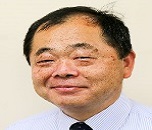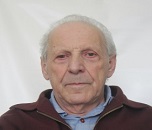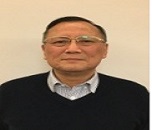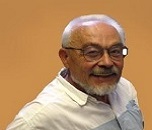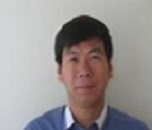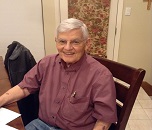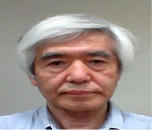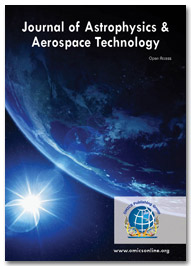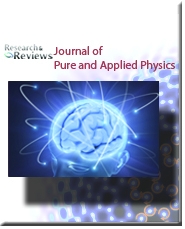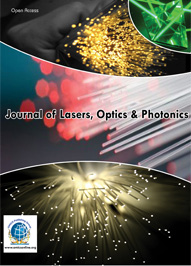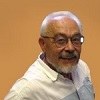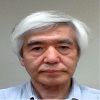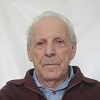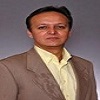Theme: Modernization of Nuclear Physics through Interaction of Atoms
Atomic Physics 2018
Details of Atomic Physics Conferences 2018 in USA:
Conference series LLC Ltd is organizing Atomic Physics Conference in 2018 at Boston, USA. We organize Physics Meetings in the fields related to Atomic Physics, Nuclear Physics, Nanotechnology, Quantum Nuclear Physics, Nuclear Engineering, Atomic Spectroscopy and Atomic Collisions.
| Conference Name | Place | Date |
| Boston, Massachusetts, USA | October 26-27, 2018 |
With the successful journey of Atomic Physics 2017 conference in Las Vegas, USA, Conference Series LLC Ltd planned to continue its Atomic Physics conference series in Boston, USA during October 26-27, 2018.
On this auspicious occasion, Conference Series LLC Ltd invites the participants from all over the globe to take part in the 4th International Conference on Atomic and Nuclear Physics at Boston, USA during October 26-27, 2018.
The theme of the conference highlights the interdisciplinary nature of Nuclear Physics and Atomic Physics. Scientific Tracks designed for this conference will enable the attendees and participants to learn extremes.
Importance & Scope:
Atomic Physics is the study of atoms as an isolated system of electrons and an atomic nucleus, whereas nuclear physics studies the constituents (protons and neutrons) and interactions of atomic nuclei. Atomic Physics also describes the physics of molecules and their properties. The essential concerned is with arrangement of electrons around the nucleus and the processes by which these arrangements change which includes ions and neutral atoms. In nuclear physics the various applications are Radioactive dating (geology, paleontology, archeology, art), Nuclear medicine (Medical Diagnosis (PET, MRI) cancer treatment with proton or heavy-ion beams), Electric power generation (nuclear fission / fusion reactors), National Security (nuclear weapons stockpile), ion implantation in materials engineering.
Why to attend?
In the light of this theme, the Conference Series LLC Ltd aims to disseminate the advancements of research in Atomic and Nuclear physics to the global community by creating a platform for active participation, exchange of expertise and lateral thinking from researchers, scientists and students through invited plenary lectures, symposia, workshops, oral and poster sessions of unsolicited contributions.
Target Audience:
- Scientists/Professors in the field of Atomic & Nuclear
- Research societies and Research Institutes
- Professors, Students and Technical Staff from Physics and other related disciplines
- Directors of Physics companies
- Delegates from Physical Science societies and Associations
- Advertising and Promotion Agency Executives
Encouraged with the success of Atomic Physics 2017, we bring up the 4th International Conference on Atomic and Nuclear Physics with its powerful 2 day agenda. Atomic Physics 2018 is designed to take place at the most fascinating city Boston, USA during October 26-27, 2018.
We focus on bringing together world's most productive visionaries and leading researchers to share their research works and results in the field of Atomic and Nuclear Physics. Take a deep dive into the newest technologies made in the field with the enlightening talks of our Speakers which will help in broadening your horizons.
Network with great people at the beautiful environment of Boston!
Track 1: Atomic Physics
Atomic physics studies about the atoms which isolates the system of electrons and an atomic nucleus. This deals with the properties of atoms, which are mostly due to their electron configuration. Atomic physics is mainly concerned with electrons encircling the nucleus of an atom. It has led to important applications in medicine, lasers, communications, etc. and also providing a testing ground for Quantum Theory, Quantum Electrodynamics and its derivatives.
Atomic Physics Conferences | Physics Conferences
4th International Conference on Astrophysics and Particle Physics December 03-05, 2018 Chicago, USA; International Conference on Quantum Mechanics and Applications, July 20-21, 2018, Atlanta, USA; 10th International Conference on Optics & Photonics November 27-29, 2018 - Los Angeles, USA; International Conference on Molecular Physics, October 15-16, 2018, Ottawa, Canada; 5th International Conference on Condensed Matter Physics, November 27-29, 2018 Los Angeles, USA; 26th International Conference on Atomic Physics (ICAP 2018), July 22-27, 2018, Barcelona, Spain; 50th Conference of the European Group on Atomic Systems (EGAS), July 09-13, 2018, Kraków, Poland; 19th Symposium of Biennial National Atomic Spectroscopy July 02-04, 2018, London, United Kingdom; 16th International Congress of Quantum Chemistry; June 18-23, 2018, Menton, France; 30th Symposium on Fusion Technology (SOFT), September 17-21, 2018, Sicily, Italy; Atomic Energy Society of Japan (AESJ); American Institute of Physics; International Atomic Energy Agency; National Association of Atomic Veterans; United States Atomic Energy Commission
Track 2: Nuclear Physics
Nuclear physics is the field of science that studies about atomic nuclei, constituents and interactions. Nuclear Physics on the other hand, apprehensions itself with the particles of the nucleus called nucleons (protons & neutrons). The research in this field has led to many applications such as nuclear power, nuclear weapons, nuclear medicine, nuclear magnetic resonance imaging. The modern nuclear physics includes nuclear fusion, nuclear fission, nuclear decay and Production of "heavy" elements using atomic number greater than five.
Nuclear Physics Conferences | Nuclear Energy Conferences
International Conference on Planetary Science and Particle Physics August 27-28, 2018, Boston, USA; International Conference on Quantum Mechanics and Applications, July 20-21, 2018, Atlanta, USA; 10th International Conference on Optics & Photonics November 27-29, 2018 - Los Angeles, USA; 4th International Conference on Astrophysics and Particle Physics December 03-05, 2018 Chicago, USA; 5th International Conference on Condensed Matter Physics, November 27-29, 2018 Los Angeles, USA; NSREC 2018 - 2018 IEEE Nuclear & Space Radiation Effects Conference July 16-20, 2018, Waikoloa, HI, United States; Nuclear Structure 2018 August 05-10, 2018, East Lansing, United States; International Congress on Advances in Nuclear Power Plants (ICAPP 18) April 8-11, 2018, Charlotte, NC; 5th Joint Meeting of the APS Division of Nuclear Physics and the Physical Society of Japan October 23-27, 2018 Hilton Waikoloa Village, Waikoloa, HI; Gordon Research Seminar - Quantum Science July 28-29, 2018, Stonehill College, Easton, MA, United States; American Nuclear Society (ANS); Korean Nuclear Society (KNS); IEEE Nuclear & Plasma Sciences Society; Nuclear Society of Russia; Canadian Nuclear Society (CNS)
Track 3: Nuclear Quantum Physics
Quantum physics also known as quantum mechanics which includes the quantum field theory is a division of physics which describes the nature at the minimum scales of energy levels of subatomic particles and atoms. Quantum physics can release the separate performances of the subatomic particles that consists all forms of matter (electrons, protons, neutrons, photons, and others). Heavy nucleus which contains hundreds of nucleons is treated as a quantum-mechanical one.
Quantum Physics Conferences | Nuclear Physics Conferences
International Conference on Quantum Mechanics and Applications, July 20-21, 2018, Atlanta, USA; 4th International Conference on Astrophysics and Particle Physics December 03-05, 2018 Chicago, USA; 5th International Conference on Condensed Matter Physics, November 27-29, 2018 Los Angeles, USA; International Conference on Planetary Science and Particle Physics August 27-28, 2018, Boston, USA; International Conference on Molecular Physics, October 15-16, 2018, Ottawa, Canada; Gordon Research Seminar - Quantum Science July 28-29, 2018, Stonehill College, Easton, MA, United States; 16th International Congress of Quantum Chemistry; June 18-23, 2018, Menton, France; 50th Conference of the European Group on Atomic Systems (EGAS), July 09-13, 2018, Kraków, Poland; Nuclear Structure 2018 August 05-10, 2018, East Lansing, United States; 19th Symposium of Biennial National Atomic Spectroscopy; July 02-04, 2018, London, United Kingdom; International Quantum Structures Association; American Institute of Physics; SPIE; ANS Nuclear Cafes; Australian Nuclear Association (ANA)
Track 4: Atomic Periodic Table
Periodic table arranges all the elements basing on their atomic number, electron configurations and recurring chemical properties. The rows of the table are called periods and the columns are called groups. The periodic table can be used to develop interactions between the properties of the elements and calculate the properties of new elements that are to be discovered.
Atomic Physics Conferences | Quantum Physics Conferences
International Conferences on Optics-Photonics, September 19-20, 2018, Philadelphia, USA; 5th International Conference on Condensed Matter Physics, November 27-29, 2018 Los Angeles, USA; International Conference on Quantum Mechanics and Applications, July 20-21, 2018, Atlanta, USA; 4th International Conference on Astrophysics and Particle Physics December 03-05, 2018 Chicago, USA; 10th International Conference on Optics & Photonics November 27-29, 2018 - Los Angeles, USA; 19th Symposium of Biennial National Atomic Spectroscopy; July 02-04, 2018, London, United Kingdom; Gordon Research Seminar - Quantum Science July 28-29, 2018, Stonehill College, Easton, MA, United States; 16th International Congress of Quantum Chemistry; June 18-23, 2018, Menton, France; 26th International Conference on Atomic Physics (ICAP 2018), July 22-27, 2018, Barcelona, Spain; International Symposium on Molecular Spectroscopy, June 18-22, 2018 - Champaign-Urbana, Illinois; The Atomic Bomb and American Society; United States Atomic Energy Commission; International Quantum Structures Association; American Institute of Physics; French Nuclear Energy Society
Track 5: Atomic Spectroscopy
Atomic spectroscopy studies about the electromagnetic radiation absorbed and emitted by atoms. In the determination of elemental compositions the electromagnetic spectrum or mass spectrum is applied that can be distributed by the type of spectroscopy used or with the atomization source. For systematic use the technology of atomic spectroscopy has generated three techniques such as Atomic Absorption, Atomic Emission and Atomic Fluorescence. The transitions involve the relaxation and excitation of the outer or bonding shell electrons of metal ions and atoms and the corresponding photons have energies inside the visible regions of the spectrum and ultraviolet. A decent instance of this is the dark absorption lines in the solar spectrum.
Atomic Spectroscopy Conferences | Spectroscopy Conferences
10th International Conference on Optics & Photonics November 27-29, 2018 - Los Angeles, USA; 4th International Conference on Astrophysics and Particle Physics December 03-05, 2018 Chicago, USA; International Conference on Molecular Physics, October 15-16, 2018, Ottawa, Canada; International Conference on Planetary Science and Particle Physics August 27-28, 2018, Boston, USA; International Conferences on Optics-Photonics, September 19-20, 2018, Philadelphia, USA; 19th Symposium of Biennial National Atomic Spectroscopy; July 02-04, 2018, London, United Kingdom; 50th Conference of the European Group on Atomic Systems (EGAS), July 09-13, 2018, Kraków, Poland; 26th International Conference on Atomic Physics (ICAP 2018), July 22-27, 2018, Barcelona, Spain; International Symposium on Molecular Spectroscopy, June 18-22, 2018 - Champaign-Urbana, Illinois; International Congress on Advances in Nuclear Power Plants (ICAPP 18) April 8-11, 2018, Charlotte, NC; Society for Applied Spectroscopy; American Nuclear Society (ANS); Atomic Energy Society of Japan (AESJ); Indian Nuclear Society (InNS); Korean Nuclear Society (KNS)
Track 6: Nuclear Medicine Physics
Nuclear Medicine is one of the applications of nuclear physics. The technologies used in nuclear medicine for diagnostic imaging are Rontgen’s discovery of X-rays and Becquerel’s discovery of natural radioactivity. The main focus in nuclear medicine in physics is the diagnostic application of Nuclear Medicine which medicine involves the administration of trace amounts of compounds labelled with radioactivity (radionuclides) that are used to provide diagnostic information in many disease.
Nuclear Physics for Medicine Conferences | Nuclear Medicine Conferences
International Conference on Quantum Mechanics and Applications, July 20-21, 2018, Atlanta, USA; 4th International Conference on Particle Physics December 03-05, 2018 Chicago, USA; 10th International Conference on Optics & Photonics November 27-29, 2018 - Los Angeles, USA; 5th International Conference on Condensed Matter Physics, November 27-29, 2018 Los Angeles, USA; International Conference on Planetary Science and Particle Physics August 27-28, 2018, Boston, USA; NSREC 2018 - 2018 IEEE Nuclear & Space Radiation Effects Conference July 16-20, 2018, Waikoloa, HI, United States; International Congress on Advances in Nuclear Power Plants (ICAPP 18) April 8-11, 2018, Charlotte, NC; 5th Joint Meeting of the APS Division of Nuclear Physics and the Physical Society of Japan October 23-27, 2018 Hilton Waikoloa Village, Waikoloa, HI; Nuclear Structure 2018 August 05-10, 2018, East Lansing, United States; 30th Symposium on Fusion Technology (SOFT), September 17-21, 2018, Sicily, Italy; American Society of Nuclear Cardiology; SPIE; American Institute of Physics; Canadian Nuclear Society (CNS); American College of Nuclear Medicine
Track 7: Interaction with Atoms
Interaction of an atom with radiation can be analyzed in three ways. They are 1) An atom makes a spontaneous transition from an excited state to a state of lower energy by emitting a photon which is the quantum of the electromagnetic field. 2) An atom absorbs the photon from a beam of radiation which makes a transition from a state of lower to a state of higher energy. 3) Atoms can also emit photons through the influence of an applied radiation field.
Interaction of Atoms and Radiation Conferences | Atom Interactions Conferences
5th International Conference on Condensed Matter Physics, November 27-29, 2018 Los Angeles, USA; 10th International Conference on Optics & Photonics November 27-29, 2018 - Los Angeles, USA; International Conference on Molecular Physics, October 15-16, 2018, Ottawa, Canada; International Conference on Quantum Mechanics and Applications, July 20-21, 2018, Atlanta, USA; 34th International Conference on Chemical Biology Radiation Therapy September 26-27, 2018, Chicago, USA; International Symposium on Molecular Spectroscopy, June 18-22, 2018 - Champaign-Urbana, Illinois; International Congress on Advances in Nuclear Power Plants (ICAPP 18) April 8-11, 2018, Charlotte, NC; Gordon Research Seminar - Quantum Science July 28-29, 2018, Stonehill College, Easton, MA, United States; 50th Conference of the European Group on Atomic Systems (EGAS), July 09-13, 2018, Kraków, Poland; 26th International Conference on Atomic Physics (ICAP 2018), July 22-27, 2018, Barcelona, Spain; American Institute of Physics; IEEE Nuclear & Plasma Sciences Society; Canadian Nuclear Society (CNS); Atomic Energy Society of Japan (AESJ); International Commission on Radiation Units and Measurements (ICRU)
Track 8: Atomic and Molecular Astrophysics
Atomic Astrophysics implements atomic physics calculations which use atomic data for reading astronomical observations. Atomic physics plays a main role in the arena of astrophysics because the astronomers get the information about any particular object through the emitted light, as this light will arise through the atomic transitions. Molecular Astrophysics studies about the emission of molecules which are in space. The molecules which are having more number of observable transitions are nearly 110 interstellar molecules.
Atomic Astrophysics Conferences | Molecular Astrophysics Conferences
International Conference on Molecular Physics, October 15-16, 2018, Ottawa, Canada; 4th International Conference on Astrophysics and Particle Physics December 03-05, 2018 Chicago, USA; International Conference on Planetary Science and Particle Physics August 27-28, 2018, Boston, USA; 5th International Conference on Condensed Matter Physics, November 27-29, 2018 Los Angeles, USA; 4th International Conference on Biophysics October 03-04, 2018, Los Angeles, USA; 26th International Conference on Atomic Physics (ICAP 2018), July 22-27, 2018, Barcelona, Spain; NSREC 2018 - 2018 IEEE Nuclear & Space Radiation Effects Conference July 16-20, 2018, Waikoloa, HI, United States; International Congress on Advances in Nuclear Power Plants (ICAPP 18) April 8-11, 2018, Charlotte, NC; 16th International Congress of Quantum Chemistry; June 18-23, 2018, Menton, France; International Symposium on Molecular Spectroscopy, June 18-22, 2018 - Champaign-Urbana, Illinois; Society for Applied Spectroscopy; Society of Physics Students; German Nuclear Society; Australian Nuclear Association (ANA); American Nuclear Society (ANS)
Track 9: Nanotechnology
Nanotechnology is the study and application of very small things which is about 1 to 100 nanometers. Nanotechnology is control of matter on a nuclear, sub-atomic and supramolecular scale. Nanotechnology as characterized by size is actually extremely wide, including fields of science as different as surface science, natural science, sub-atomic science, semiconductor material science, micro fabrication, sub-atomic building and so on.
Nanotechnology Conferences | Physics Conferences
International Conference on Quantum Mechanics and Applications, July 20-21, 2018, Atlanta, USA; International Conferences on Optics-Photonics September 19-20, 2018, Philadelphia, USA; 5th International Conference on Condensed Matter Physics, November 27-29, 2018 Los Angeles, USA; 10th International Conference on Optics & Photonics November 27-29, 2018 - Los Angeles, USA; 4th International Conference on Particle Physics December 03-05, 2018 Chicago, USA; Nuclear Structure 2018 August 05-10, 2018, East Lansing, United States; 50th Conference of the European Group on Atomic Systems (EGAS), July 09-13, 2018, Kraków, Poland; International Congress on Advances in Nuclear Power Plants (ICAPP 18) April 8-11, 2018, Charlotte, NC; 16th International Congress of Quantum Chemistry; June 18-23, 2018, Menton, France; International Symposium on Molecular Spectroscopy, June 18-22, 2018 - Champaign-Urbana, Illinois; Nanotechnology and Nanoscience Student Association (NANSA); Nano Science and Technology Institute (NSTI); International Association of Nanotechnology; American National Standards Institute Nanotechnology Panel (ANSI-NSP); IEEE Nanotechnology Council
Track 10: Nuclear Reactor Physics
Nuclear reactor physics deals with the study and application of chain reaction to make a controlled rate of fission in a nuclear reactor for the production of energy. Many nuclear reactors use this chain reaction to bring a controlled rate of nuclear fission in fissile material which releases both energy and free neutrons. The reactor comprises of nuclear fuel, generally surrounded by a neutron moderator such as regular water, heavy water, graphite or zirconium hydride.
Nuclear Reactor Physics Conferences | Reactor Physics Conferences
5th International Conference on Condensed Matter Physics, November 27-29, 2018 Los Angeles, USA; International Conference on Molecular Physics, October 15-16, 2018, Ottawa, Canada; International Conference on Quantum Mechanics and Applications, July 20-21, 2018, Atlanta, USA; 4th International Conference on Particle Physics December 03-05, 2018 Chicago, USA; 10th International Conference on Optics & Photonics November 27-29, 2018 - Los Angeles, USA; 5th Joint Meeting of the APS Division of Nuclear Physics and the Physical Society of Japan October 23-27, 2018 Hilton Waikoloa Village, Waikoloa, HI; NSREC 2018 - 2018 IEEE Nuclear & Space Radiation Effects Conference July 16-20, 2018, Waikoloa, HI, United States; Nuclear Structure 2018 August 05-10, 2018, East Lansing, United States; International Congress on Advances in Nuclear Power Plants (ICAPP 18) April 8-11, 2018, Charlotte, NC; 30th Symposium on Fusion Technology (SOFT), September 17-21, 2018, Sicily, Italy; American Nuclear Society (ANS); Atomic Energy Society of Japan (AESJ); Canadian Nuclear Society (CNS); Korean Nuclear Society (KNS); SPIE
Track 11: Nuclear Engineering
Nuclear engineering is the division of engineering, which is the analysis (fission) as well as the arrangement (fusion) of atomic nuclei or the application of other sub-atomic physics, based on the ideologies of nuclear physics. Nuclear engineering deals with the application of nuclear energy which includes nuclear power plants, submarine propulsion systems, food production, nuclear weapons and radioactive-waste disposal facilities. The field also includes the study of medical and other applications of radiation, nuclear safety and the problems of nuclear proliferation.
Nuclear Engineering Conferences | Engineering Conferences
10th International Conference on Biosensors, Bioelectronics & Biomedical Engineering September 21-22, 2018, Dallas, USA; 4th International Conference on Particle Physics December 03-05, 2018 Chicago, USA; 6th International Conference on Mechanical Aerospace Engineering, Nov 07-08, 2018 Atlanta, USA; International Conference on Molecular Physics, October 15-16, 2018, Ottawa, Canada; International Conference on Quantum Mechanics and Applications, July 20-21, 2018, Atlanta, USA; 30th Symposium on Fusion Technology (SOFT), September 17-21, 2018, Sicily, Italy; Nuclear Structure 2018 August 05-10, 2018, East Lansing, United States; NSREC 2018 - 2018 IEEE Nuclear & Space Radiation Effects Conference July 16-20, 2018, Waikoloa, HI, United States; Gordon Research Seminar - Quantum Science July 28-29, 2018, Stonehill College, Easton, MA, United States; 26th International Conference on Atomic Physics (ICAP 2018), July 22-27, 2018, Barcelona, Spain; Institute of Nuclear Materials Management (INMM); Institute of Nuclear Power Operations (INPO); World Nuclear Association (WNA); Nuclear Energy Agency (NEA); American Nuclear Society (ANS)
Track 12: Atomic Collisions
Atomic collisions are elementary collisions that occur between two atomic particles such as atoms, molecules, electrons or ions. This kind of collisions is two types, they are elastic collisions and inelastic collisions. In an Elastic collision the total energy remains the same before and after the collision, where the directions of motion of the particles are transformed and the kinetic energy is merely distributed among the particles. In an Inelastic collision the internal energy of the colliding particles will change where these particles go through transitions to different energy levels and the electronic state of an atom or a molecule is changed.
Atomic Collision Conferences | Collision Conferences
International Conference on Molecular Physics, October 15-16, 2018, Ottawa, Canada; 10th International Conference on Optics & Photonics November 27-29, 2018 - Los Angeles, USA; International Conference on Quantum Mechanics and Applications, July 20-21, 2018, Atlanta, USA; 5th International Conference on Condensed Matter Physics, November 27-29, 2018 Los Angeles, USA; 4th International Conference on Astrophysics and Particle Physics December 03-05, 2018 Chicago, USA; 50th Conference of the European Group on Atomic Systems (EGAS), July 09-13, 2018, Kraków, Poland; International Congress on Advances in Nuclear Power Plants (ICAPP 18) April 8-11, 2018, Charlotte, NC; 19th Symposium of Biennial National Atomic Spectroscopy; July 02-04, 2018, London, United Kingdom; International Symposium on Molecular Spectroscopy, June 18-22, 2018 - Champaign-Urbana, Illinois; 5th Joint Meeting of the APS Division of Nuclear Physics and the Physical Society of Japan October 23-27, 2018 Hilton Waikoloa Village, Waikoloa, HI; International Atomic Energy Agency (IAEA); Atomic Energy Society of Japan (AESJ); Nuclear Institute (NI); The Atomic Bomb and American Society;
Track 13: Nuclear Fission and Fusion
Nuclear fission and Nuclear fusion are dissimilar types of reactions that release due to the formation of nuclei with higher nuclear binding energy. Nuclear fission is also a nuclear reaction or a radioactive decay process in which the nucleus of an atom splits into lighter nuclei, which produces neutrons and photons and also releases a large amount of energy. Nuclear fusion is a reaction in which two or more atomic nuclei collide at very high energy to form one or more altered atomic nuclei and subatomic particles.
Nuclear Fission and Fusion Conferences | Nuclear Reaction Conferences
5th International Conference on Condensed Matter Physics, November 27-29, 2018 Los Angeles, USA; 4th International Conference on Astrophysics and Particle Physics December 03-05, 2018 Chicago, USA; 10th International Conference on Optics & Photonics November 27-29, 2018 - Los Angeles, USA; 10th International Conference on Biosensors, Bioelectronics & Biomedical Engineering September 21-22, 2018, Dallas, USA; International Conferences on Optics-Photonics September 19-20, 2018, Philadelphia, USA; Gordon Research Seminar - Quantum Science July 28-29, 2018, Stonehill College, Easton, MA, United States; NSREC 2018 - 2018 IEEE Nuclear & Space Radiation Effects Conference July 16-20, 2018, Waikoloa, HI, United States; 30th Symposium on Fusion Technology (SOFT), September 17-21, 2018, Sicily, Italy; International Congress on Advances in Nuclear Power Plants (ICAPP 18) April 8-11, 2018, Charlotte, NC; Institute of Nuclear Power Operations (INPO); Radiological Society of North America; International Quantum Structures Association; SPIE; American Institute of Physics
Track 14: Laser Atomic Physics
Laser stands for Light Amplification by Stimulated Emission of Radiation. The physics of an atom laser is similar to that of an optical laser and the main difference between an optical and an atom laser is that atoms interact with themselves, cannot be created as photons and retain mass whereas photons do not. Main applications of the atom laser are atom holography and atom interferometry.
Atomic Physics of Lasers Conferences | Atomic Laser conferences
10th International Conference on Optics & Photonics November 27-29, 2018 - Los Angeles, USA; International Conference on Quantum Mechanics and Applications, July 20-21, 2018, Atlanta, USA; International Conferences on Optics-Photonics September 19-20, 2018, Philadelphia, USA; 5th International Conference on Condensed Matter Physics, November 27-29, 2018 Los Angeles, USA; International Conference on Molecular Physics, October 15-16, 2018, Ottawa, Canada; 19th Symposium of Biennial National Atomic Spectroscopy; July 02-04, 2018, London, United Kingdom; 16th International Congress of Quantum Chemistry; June 18-23, 2018, Menton, France; International Symposium on Molecular Spectroscopy, June 18-22, 2018 - Champaign-Urbana, Illinois; 5th Joint Meeting of the APS Division of Nuclear Physics and the Physical Society of Japan October 23-27, 2018 Hilton Waikoloa Village, Waikoloa, HI; Nuclear Structure 2018 August 05-10, 2018, East Lansing, United States; European Laser Association; The International Society for Laser Surgery and Medicine (ISLSM); International Atomic Energy Agency (IAEA); Canadian Nuclear Society (CNS); World Nuclear Association
Track 15: Nuclear Astrophysics
Nuclear Astrophysics is a combination of nuclear physics and astrophysics which studies about the nuclear reactions and nuclear-level processes that occur naturally in space. Nuclear astrophysics has the spectacular movement in modelling the structure and evolution of stars, as well as in the experimental and theoretical understanding of the atomic nucleus and of its spontaneous or induced transformations.
Nuclear Astrophysics Conferences | Astrophysics Conferences
4th International Conference on Astrophysics and Particle Physics December 03-05, 2018 Chicago, USA; 5th International Conference on Condensed Matter Physics, November 27-29, 2018 Los Angeles, USA; International Conference on Molecular Physics, October 15-16, 2018, Ottawa, Canada; 10th International Conference on Optics & Photonics November 27-29, 2018 - Los Angeles, USA; International Conference on Quantum Mechanics and Applications, July 20-21, 2018, Atlanta, USA; International Congress on Advances in Nuclear Power Plants (ICAPP 18) April 8-11, 2018, Charlotte, NC; 19th Symposium of Biennial National Atomic Spectroscopy; July 02-04, 2018, London, United Kingdom; 16th International Congress of Quantum Chemistry; June 18-23, 2018, Menton, France; International Symposium on Molecular Spectroscopy, June 18-22, 2018 - Champaign-Urbana, Illinois; 5th Joint Meeting of the APS Division of Nuclear Physics and the Physical Society of Japan October 23-27, 2018 Hilton Waikoloa Village, Waikoloa, HI; ANS Nuclear Cafes; World Nuclear Association (WNA); American Nuclear Society (ANS); Society of Physics Students; Canadian Nuclear Society (CNS);
Track 16: Nuclear Radioactive Decay
Radioactive decay is also known as nuclear decay and it occurs when an unsteady atom loses energy by emitting radiation such as alpha particle, beta particle, gamma rays or electron in the case of internal conversion. Radioactivity is the result of the decay or disintegration of unstable nuclei. This process of radioactive decay can be done using three primary methods; by spontaneous fission (splitting) into two fragments, a nucleus can change one of its neutrons into a proton with the done at the same time emission of an electron (beta decay), by emitting a helium nucleus (alpha decay).
Nuclear Radioactive Decay Conferences | Radioactive Decay Conferences
International Conference on Molecular Physics, October 15-16, 2018, Ottawa, Canada; 5th International Conference on Condensed Matter Physics, November 27-29, 2018 Los Angeles, USA; 10th International Conference on Optics & Photonics November 27-29, 2018 - Los Angeles, USA; 10th International Conference on Biosensors, Bioelectronics & Biomedical Engineering September 21-22, 2018, Dallas, USA; 4th International Conference on Astrophysics and Particle Physics December 03-05, 2018 Chicago, USA; NSREC 2018 - 2018 IEEE Nuclear Conference July 16-20, 2018, Waikoloa, HI, United States; Nuclear Structure 2018 August 05-10, 2018, East Lansing, United States; 30th Symposium on Fusion Technology (SOFT), September 17-21, 2018, Sicily, Italy; 26th International Conference on Atomic Physics (ICAP 2018), July 22-27, 2018, Barcelona, Spain; 19th Symposium of Biennial National Atomic Spectroscopy; July 02-04, 2018, London, United Kingdom; International Commission on Radiological Protection (ICRP); Canadian Nuclear Association (CNA); American Society of Nuclear Cardiology; American Nuclear Society (ANS); Radiological Society of North America
Summary:
Atomic Physics deals with the atoms which isolates the system of electrons and atomic nucleus. Atomic physics also aids to understand the physics of molecules to describe the physical properties of molecules. This field is associated with nuclear reactor and nuclear weapons because of the enormous use of atomic and nuclear physics.
Nuclear Physics studies about the atomic nuclei of their constituents and interactions. This field has led to many applications such as nuclear power, nuclear weapons, nuclear medicine and magnetic resonance imaging, industrial and agricultural isotopes, ion implantation in materials engineering.
Conference Series LLC Ltd welcomes you all to the “4th International Conference on Atomic and Nuclear Physics” with the theme “Modernization of Nuclear Physics through interaction of atoms”. The conference will be held during October 26-27, 2018 at Boston, USA. The Committee is looking forward to organize an exceptional meeting with an interesting sessions and to meet new people from different parts of the globe, where one can share one’s subject and passion.
Importance and Scope:
Atomic Physics 2018 conducts a wide range of Sessions and Tracks which provides the participants and all the attendees with an opportunity to extend their information in the subject and interact with professionals in the field of Atomic Physics and Nuclear Physics. The agenda of the conference highlights new and advanced science and current topics with interesting Sessions, Symposia, Workshops, Plenary talks, Keynote Presentations, Young Researchers Forum and Poster Sessions.
Why Boston?
Boston is one of oldest city and is the capital and most crowded city of the Commonwealth of Massachusetts in the United States. It has turned into the most recent city to focus on running 100% sustainable power source. The city accurately covers 48 square miles (124 km2) with an estimated people of 673,184 in 2016, making it the largest city in the New England region of the northeastern United States. Boston is surrounded by the "Greater Boston" region and is known as "city of neighborhoods". The city has many tourist attractions such as Faneuil Hall, Boston Massacre, Museum of Fine Arts, Bunker Hill Monument, Byeongbangchi SkyWalk, Castle Island etc.
Major Societies/Associations in USA:
- American Institute of Physics
- American Nuclear Society (ANS)
- Nano Science and Technology Institute (NSTI)
- Canadian Nuclear Society (CNS)
- Atomic Energy Society of Japan (AESJ)
- Laser Institute of America
- The Atomic Bomb and American Society
- World Nuclear Association (WNA)
- International Atomic Energy Agency (IAEA)
- IEEE Nuclear & Plasma Sciences Society
- Nuclear Energy Agency (NEA)
- American College of Nuclear Medicine
- United States Atomic Energy Commission
- Society for Applied Spectroscopy
-
European Nuclear Society (ENS)
Market Analysis:
Atomic Physics systems has been increasing due to the developing necessities of the industries as wells as the substantial demand. Atomic Physics market is estimated to reach USD 5.60 Billion by 2020, rising at a CAGR of 6.0% through the calculation period of 2015 to 2020. North America probably has the largest share, in the upcoming years; the atomic physics market is expected to see the maximum growth rate in the Asia-Pacific region, with accent on India, China and Japan. Some of the key players in the global atomic physics market comprise Agilent Technologies (U.S.), PerkinElmer (U.S.), Thermo Fisher Scientific (U.S.) and Bruker Corporation (U.S.).
Nuclear Physics is used to define, describe and forecast the market on the basis of process, end users and region. Nuclear Physics market is expected to reach USD 2.85 Billion by 2021 from USD 2.25 Billion in 2016, mounting at a CAGR of 4.8% through the calculation period of 2016 to 2021. We can analyze the size of the nuclear physics market with respect to four main regions i.e., North America, Europe, Asia-Pacific and the Rest of the World. It provides the complete details of the competitive landscape for the market leaders for the opportunities of stakeholders.
Atomic and Nuclear Physics Market, by Region
- North America
- U.S
- Canada
- Europe-5 (France, Germany, Italy, Spain and U.K)
- Russia
- Rest of Europe (RoE)
- Asia-Pacific
- Japan
- China
- India
- Rest of Asis-Pacific (RoAPAC)
- Rest of World (RoW)
Conference Highlights
- Atomic Physics
- Atomic Collisions
- Interaction with Atoms
- Atomic Periodic Table
- Atomic Spectroscopy
- Laser Atomic Physics
- Nuclear Physics
- Nuclear Reactor Physics
- Nuclear Quantum Physics
- Nuclear Radioactive Decay
- Nuclear Fission and Fusion
- Nuclear Astrophysics
- Atomic and Molecular Astrophysics
- Nanotechnology
- Nuclear Medicine Physics
- Nuclear Engineering
To share your views and research, please click here to register for the Conference.
To Collaborate Scientific Professionals around the World
| Conference Date | October 26-27, 2018 | ||
| Sponsors & Exhibitors |
|
||
| Speaker Opportunity Closed | Day 1 | Day 2 | |
| Poster Opportunity Closed | Click Here to View | ||












